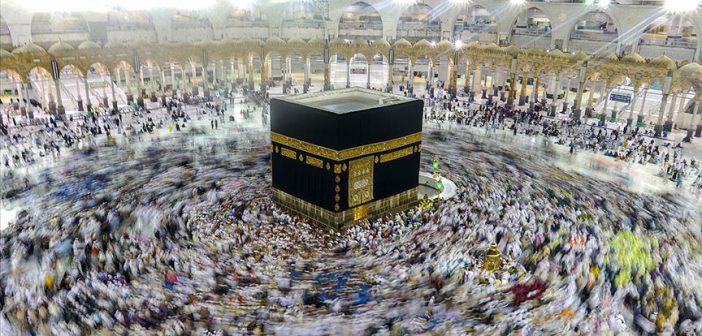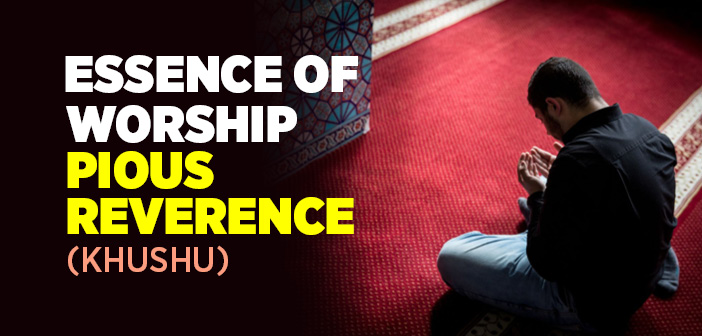What is minor ablution, major ablution of the body, ablution with sand or earth in the absence of water (Dry ablution) in Islam?
Minor ablution, major ablution of the body, ablution with sand or earth in the absence of water (Dry ablution)
- Minor Ablution (Wudu)
Obligatory Requirements (Fardh) of Minor Ablution
- 1. Washing the face.
- Washing both hands and arms thoroughly up to the elbows.
- Moving the palm of the wet hand over one-fourth of the head, starting from the front of the forehead to the back of the hend.
- Washing the feet up to the ankles.
The Voluntary Acts (Sunnah) performed by the Prophet (J) in the Minor Ablution:
- 1. Declaring the intention that the act is for the purpose of worship and purity.
- Saying at the start, بِسمِ الله الرَ همن الرهيم“In the name of Allah, the most Merciful, the most Compassionate.”
- Beginning by washing both hands up to the wrists.
- Cleansing the teeth with a toothbrush (miswak) whenever possible, if not, then rubbing with the fingers.
- Doing the washing from the beginning to the end without any break.
- Rubbing the areas of ablution.
- Rinsing out the mouth with water three times.
- Gargling (not to be done when fasting).
- Cleansing the nostrils by sniffing water three times.
- Washing three times.
- 11. Beginning to wash from the right side.
- Beginning to wash the hands and the feet from the fingertips and toes.
- Wiping the beard with wet hands.
- Moving the ring on the finger so that no part remains dry.
- Rubbing wet fingers into the grooves of both ears and cavities.
- Passing both hands over the back of the head to the neck.
- Moving the palm of the wet hand over the whole head.
- Making sure that water has reached between the fingers and the toes.
- Major Ablution of the Body (Ghusl, bath)
Obligatory Acts (Fardh) of the Major Ablution:
- Gargling to the throat.
- Washing the nostrils.
- Washing the whole body.
The Voluntary Acts (Sunnah) performed by the Prophet (J) in the Major Ablution.
- 1. Clear intention that it is for the purpose of purity and worship.
- Saying at the start, بِسمِ الله الرَ همن الرهيم“In the name of Allah, the most Merciful, the most Compassionate.”
- Washing any dirt from the body.
- Washing the private parts.
- Making a Minor ablution before the Major ablution.
- Washing the whole body three times and making sure it covers every part of the body.
- Washing the head first, then over the right and then the left shoulders, and then rubbing the body.
- Washing the feet last.
- Minor Ablution with Sand or Earth in the Absence of Water (Dry Ablution)
Obligatory Acts (Fardh) of Dry Ablution:
- 1. Declaring the intention that the act is for the purpose of worship and purity.
- Wiping the hands on clean sand or earth twice and anointing the face and arms respectively.
The Voluntary Acts (Sunnah) performed by the Prophet (J) in Dry Ablution:
- 1. Saying first, بِسمِ الله الرَ همن الرهيم“In the name of Allah, the most Merciful, the most Compassionate.”
- Doing all acts in proper order.
- Doing the acts without stopping.
- Moving hands forward first and then back while wiping on the earth.
- Keeping the fingers separated.
- Shaking the hands off when lifting from the earth.
-
Prayer
There are twelve requirements for prayer. Some of them are external prerequisites. These are called “conditions of prayer.” And some of them are internal prerequisites. These are called “pillars of prayer.”
The Conditions of Prayer:
- Purification from invisible dirt: This requires purity from invisible dirt or dust. It is done by performing Minor ablution, Major ablution, or dry ablution.
- from visible dirt: This requires that the entire body, the clothes worn, and the ground used for prayer be free from all kinds of dirt or impurity.
- Proper dress: Dressing properly in such a way so as to meet the moral regulations aimed at covering the private parts. For the male, the body should be covered at least from the navel to the knees. For the female, the whole body should be covered except the face, the hands and the feet. If one-fourth of the part of the body becomes open then the prayer is void.
- Facing the Ka’bah: Facing the right direction, the Qiblah, the direction of the Ka’bah at Mecca. If one’s direction is turned during prayer his prayer is nullified.
- Time: Obligatory prayers are to be done at fixed times. They cannot be advanced or postponed.
- Intention: Declaring the intention of prayer with both the heart and tongue. In the case of prayer in congregation the leader of the prayer should declare that he is the leader, and the congregation should declare that they are subject to the leader.
The Pillars of Prayer:
- Reciting ” آللَه اَكبَرAllahu Akbar is the Greatest” at the start: This is done by raising the hands up to the ears while saying “Allah is Greatest.”
- Standing: Those who have sufficient strength are required to stand to begin prayer and if unable, they may sit or recline.
- Recitation: It means reciting at least three verses from the Qur’an while standing.
- Bowing Down: After standing we bow down with our hands placed on our knees while saying three times سُبْحَانَ رَ ِبّىَ اْلعَظِيمِ“Glory to my Lord, the Mighty.”
- Prostration: It means prostrating on the floor with the forehead, nose, palms of both hands, and knees touching the floor while reciting three times سُبْحَانَ رَ ِبّىَ اْلاَعْلَى“Glory to my Lord, the Highest.”
- Sitting Upright: This is done by sitting at the end of the prayer so as to read the blessing called “at-Tahiyyat.”
Other Conditions of Prayer:
- 1. Commencing the prayer by saying “Allah is the آللَه اَكبَر”
- Recitation of the opening chapter of the Qur’an (al-Fatiha) in all units of prayers both obligatory and voluntary.
- One should recite a minimum of three short verses from the Qur’an after and in addition to al-Fatiha. This should be done in the first two units of any obligatory prayer and in all units of voluntary prayers.
- Placing the nose together with the forehead on the floor while prostrating.
- Doing two prostrations one after another in each unit of prayer.
- Doing all acts properly.
- Sitting upright after two units of three or four unit prayers.
- Reading the blessing called “at-Tahiyyat” while sitting upright.
- Standing up after sitting upright to continue the three or four unit prayers.
- Reading out loud the opening chapter (al-Fatiha) and a passage from the Qur’an in the first two units of the morning, evening, and late evening prayers if offered in congregation, and also in the Friday congregational and Eid prayers.
- 11. Reading in a low voice in all units of the noon and late-noon prayers, and also in the third and fourth units of the evening and late-evening prayers.
- Reading out loud the opening chapter (al-Fatiha) and the passages from the Qur’an in the Tarawih prayer, and in the Witr prayer offered during the month of Ramadan.
- If prayer is offered in congregation, the individuals apart from the leader of the prayer are not required to read the opening chapter (al-Fatiha) and the passages from the Qur’an.
- Reciting the Qunut (devotion) supplication in the last unit of the three unit Witr prayer (performed at the end of the late evening prayers.)
- Saying the special prayers related to the Eid prayers.
- Ending the prayer with greetings directed to the angels on the right and the left shoulders.
- Making the prostration of forgetfulness (sajda-us –sahw) in case of any minor mistake made during prayer.
- Prostration when a verse of prostration is recited in prayer.
The Voluntary Features of Prayer Performed by the Prophet (J):
- 1. Raising the hands up to the ears when beginning the prayer, and also at the beginning of the qunut prayer of the witr prayer and then placing the right hand on the left hand just below the navel or on the chest (females put their hands on the chest).
- Before reading al-Fatiha, reciting the “subhanaka” in the first unit of each prayer and then saying, “I seek shelter in Allah from the rejected satan”
- Saying “Ameen!” silently (according to Hanefi fiqh) after al-Fatiha in all prayers whether done in congregation or separately.
- Saying “Allah is Greatest” before and after every act between different sections of the prayer.
- Saying سَمٍِعََ اللهُلِمَنْ حَمِدَهُ“Allah hears those who praise Him. Our Lord, praise be to You!” while rising after bowing down.
- سُبْحَانَ رَ ِبّىَ اْلعَظِيمِSaying “Glory to my Lord, the Greatest” three times while bowing down, and سُبْحَانَ رَ ِبّىَ اْلاَعْلَى“Glory to my Lord, the Highest” three times while prostrating.
- Placing the palms on the knees while bowing down, and holding the elbows straight, and the head level with one’s back.
- Placing the knees, hands, and face on the floor respectively while prostrating; and removing them in reverse order; and placing the face in between the hands in prostration.
- Placing the hands on the knees while sitting upright; reading “at-Tahiyyat” during the first sitting; and reading “at-Tahiyyat” and as-Salah alan nabiyy (the blessing on the Prophet) in the final sitting.
10. Turning the face to the right and to the left respectively at the end of the prayer with the words اَسَّلاَمُ عَلَيْكُمْ وَرَ حْمَةُ اللهِ“Peace and the Mercy of Allah be upon You!”
Source: Osman Nuri Topbaş, ISLAM SPIRIT AND FORM, Erkam Publications






